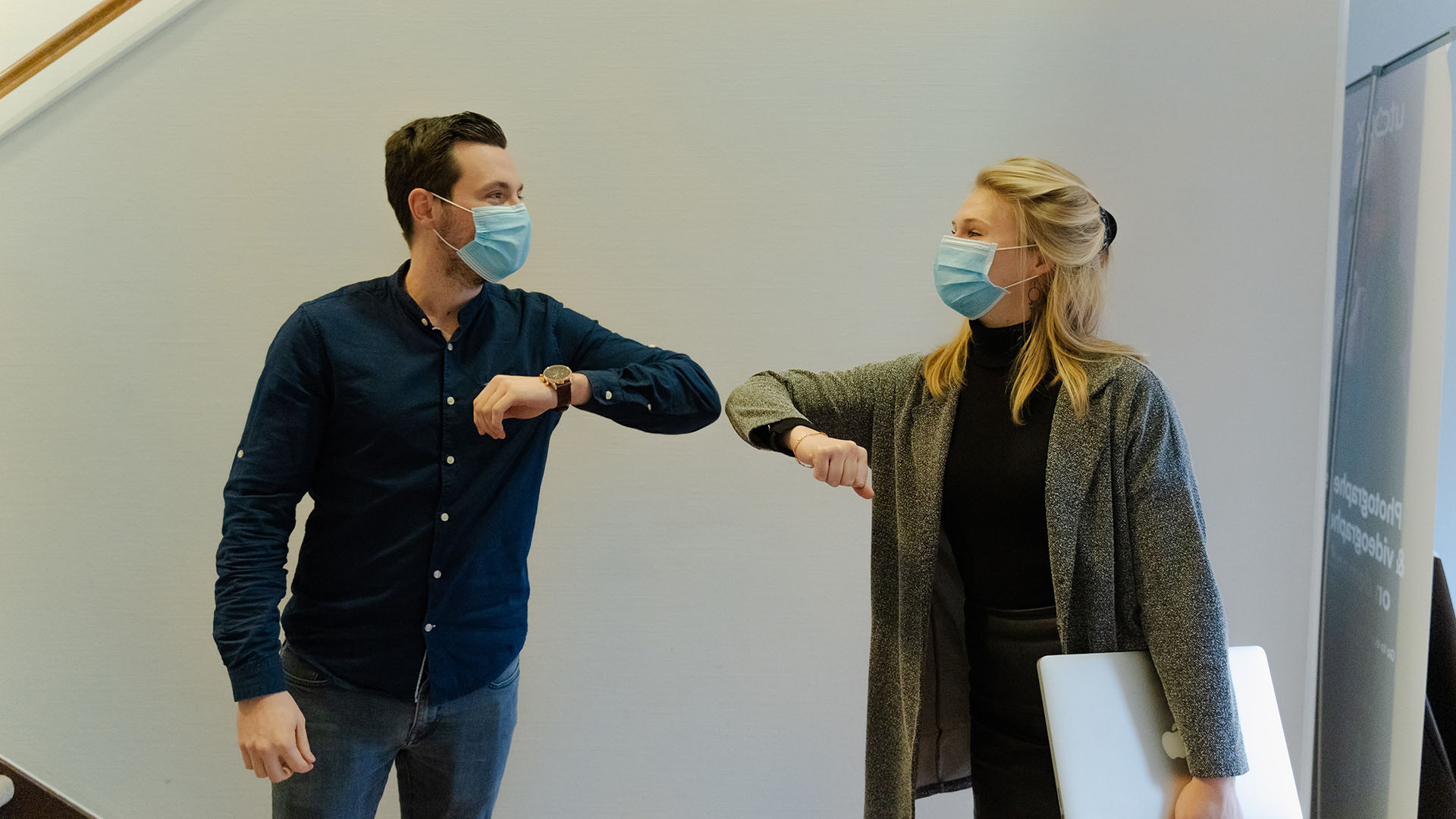Return To Office After Covid: What To Do?
Fri, 4 Mar 2022

Reimagining How Work Will Get Done In The Physical Office
Reimagining how and where work gets done would empower the whole organization to be more productive, be more satisfied with their jobs, and be more engaged with each other.
This means that instead of being forced into cubicles or offices, employers could use technology to create flexible spaces where workers can collaborate from wherever they are, rather than getting into the traditional office setting.
There’s no doubt that work is getting done in new places and ways, which companies are adopting across industries. Moving forward, even in the office setting, there will be more collaboration, and less isolation as the environment adapts to the new normal.
Benefits of Returning to the Office
There are benefits of returning to work for office workers after working from home for so long.

Able to Interact Face-To-Face With Colleagues Again
Employees who go back to the office feel less lonely because they can interact with their colleagues. You will be able to see them smile, hear their laughter, and feel their presence.
This human connection will help you feel less isolated at home. It will help you feel more connected to others and yourself.
The ability to collaborate with others helps improve teamwork and productivity.
When you are physically present with other colleagues, you can easily notice if there is any tension or conflict between coworkers.
For instance, if you are not sure what to do, you can seek advice from those around you.
It Fosters Better Collaboration and Communication
Distributed workers report feeling isolated and undervalued at work. For many people, face-to-face meetings are still preferred over virtual meetings as they provide an opportunity to connect with others.
This can also avoid miscommunication between team members that may occur when using technology alone.
You can ask questions directly to each other without waiting for someone else to respond. This allows everyone on the team to contribute equally.
It Creates Better Focus
If you have ever tried to do something while doing other things at the same time at home, you may feel how difficult it can be. This is because our brains are constantly trying to multitask. However, if you take a break every now and then, you can get back to work with ease.
Having a non-stop barrage of online communication from colleagues makes it hard to focus on tasks and leaves us less productive.
By returning to the office and working there, you can set aside some uninterrupted time for focused work.

Is It Mandatory to Get a COVID-19 Vaccines Before Returning to the Workplace?
Yes, and this is on top of the existing standard operating procedures (SOPs) currently in place. So at the very least, you should be double vaccinated, and even better, you got the booster jab.
Even so, this doesn’t mean that you will be risk-free from contracting the virus if you go back to work.
Also, employers must direct the person to a designated isolation area in their office space, along a designated route, by making provisions for one or more persons displaying symptoms such as an additional isolation area or having contingency plans in place.
What if an Employee Refuses to Come To Work for Fear of Infection?
If an employee refuses to come to work for fear of infection, it is best to let them work from home.
The risk of COVID-19 infection is still rampant in Malaysia despite being already vaccinated, and the chances of catching the virus are higher than staying at home.
However, if your company has no choice but to send employees back to the office, make sure that all necessary precautions are taken to ensure the safety of all employees.
If the employee intends to return to the office, they should ensure that COVID-19 self-testing is done before coming into the office.
If they have tested negative, they can return to the office.
What About Flexible or Hybrid Work Environment?
A flexible work environment allows employees to choose their hours and schedules between working in the office and from home. This type of work arrangement can be beneficial if you look to balance work with your personal life.
Flexible or hybrid work policies could reduce the number of infrastructure changes needed in the physical workplace.
Defining and communicating parameters for roles still required in the office would be necessary.
Changing Attitudes in the Office Environment
Employees can be anxious about returning to the office after working remotely during the pandemic. This is because not only do they associate the office with traditional work practices, but also the risk of getting contracted by the virus is higher.
It’s important to remember that physical spaces like offices aren’t always where the action happens.
Employers can provide updates about precautions they are taking and be transparent about the number of Covid-19 infections in the building.
Providing a safe environment and allowing employees to feel heard can substantially decrease anxiety among employees. In addition, a proper office plan post-pandemic can help create a sense of normalcy when employees return to the office.
Steps to Reimagine Work and Workplaces
There are many ways to reinvent the workplace by considering these steps.
1. Create a Culture Where Everyone Feels Valued and Respected.
The workplace needs to be redesigned to support organizational priorities moving forward. This can be done by providing a culture where people feel empowered to contribute ideas and solutions.
Flexibility is essential to creating an inclusive and healthy workplace. Employees who can work from home should be allowed to do so.
However, if there is a need to have them come into the office, make sure they have the resources and equipment to stay safe.
2. Make Sure All Employees Know Their Rights and Responsibilities.
Companies and organizations reconsider how they work and what roles can be done once they are in the office setting.
This includes the definition of what your employees’ responsibilities are as well as how they will be evaluated.
3. Communicate Clearly and Frequently.
Communication is key to making sure employees understand why certain precautions need to be taken and when doing the work in the office.
By right, communicating in person would be better than via email or phone calls.
4. Provide Ongoing Training and Education.
As companies adapt to remote working during the worst times of the pandemic, it can be awkward to return to the office setting.
Proper training and onboarding sessions are an excellent way to prepare employees for the transition back into the office.
5. Be Thoughtful About Technology.
Technology will play a central role in enabling everyone in the company to return to the office and work safely before a vaccine becomes widely available.
Therefore, it’s critical to make sure technology works seamlessly even when working in the office.
6. Work Flexibly.
Work needs to be reconfigured to ensure that the most critical processes can be carried out in the office.
Identify the most important processes for each function and redesign them completely.
Flexibility will serve as a foundation for an improved operating model that leverages the best of working in the office.
7. Recognize the Importance of Face Time.
Now that employees are returning to the office, it’s essential to recognize that face time with colleagues is still precious.
It’s also important to note that not every interaction requires face time, but there should be opportunities to connect with others.
8. Focus On the Positive Aspects of Working Together Again.
Organizations should take steps to reimagine how work is done and what the future role of the office will be.
The permanent change will also require exceptional change-management skills and constant pivots based on how well the effort works overtime.
Tough choices will come up, and employers must be empowered to drive the effort across individual functions and businesses.
To succeed in this area, organizations must have a team sport approach across real estate, human resources, technology, and business functions
9. Practice Self-Care Amid Returning to the Office.
Following a healthy routine is absolutely recommended when leading up to returning to work during the COVID-19 pandemic.
Stress can happen when working in the office, especially when employees are so used to working from home. Some signs of stress that can be addressed in real-time include headaches, heaviness in the chest, raised heart rate, and general body aches.
Rebuild the work environment to make employees happier and healthier by making sure they feel safe at work.
10. Be Prepared for the Unexpected.
With so much uncertainty surrounding the future of work, unanticipated challenges may arise while transitioning back to the office buildings.
Preparing for the unexpected would mean having contingency plans ready to address any issues that could arise.

Now Is the Time to Adapt to the New Normal of Work
Employers must use this moment to break from the inertia of the past and dispense with suboptimal old habits to improve productivity.
A well-planned return to offices can reinvent their roles and create a better experience for employees, improve communication and productivity, and, more importantly, reduce costs.
Ultimately, a safe environment where people can enjoy their work is the most crucial part while working in the new normal.
